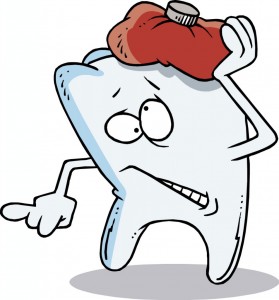 You wake up one morning, brush your teeth and then while drinking that first cup of coffee, you notice one of your teeth hurt. Or maybe it’s a couple of teeth, you really can’t tell. Toothache symptoms can be caused by a wide range of problems which don’t always originate from a tooth.
You wake up one morning, brush your teeth and then while drinking that first cup of coffee, you notice one of your teeth hurt. Or maybe it’s a couple of teeth, you really can’t tell. Toothache symptoms can be caused by a wide range of problems which don’t always originate from a tooth.
- A human face has four major sinus cavities. The maxillary sinuses are approximately an inch across and are found on top of each cheekbone. When a virus, bacteria or certain allergens irritate and infect the maxillary cavity the accompanying pressure can mimic a toothache.
- Trigeminal neuralgia is caused when the trigeminal nerve becomes inflamed. This nerve is responsible for sensation in the face and the biting and chewing motor functions. When you have trigeminal neuralgia, often something as simple as brushing your teeth can cause debilitating pain. Because of the complexity of determining a true diagnosis, frequently people end up going through many medical and dental procedures before being correctly diagnosed.
- Occasionally an ear infection, temporomandibular joint disorder (TMJ) symptoms or tight facial muscles can lead you to believe you have a toothache. Then there are those times when even after a visit to your dentist you still have unexplained tooth pain. One of the most common causes is a cracked tooth. Something as small as even a microscopic crack may cause excruciating pain.
- There is an entire realm of other medical health concerns which may cause tooth pain. Generally with the majority of these more serious conditions there are always other symptoms to take into consideration.
Dr. Ellis is a firm believer that all tooth pain needs to be investigated. Please contact the office at 314.965.1334 and speak with Nicole, our scheduling coordinator.

